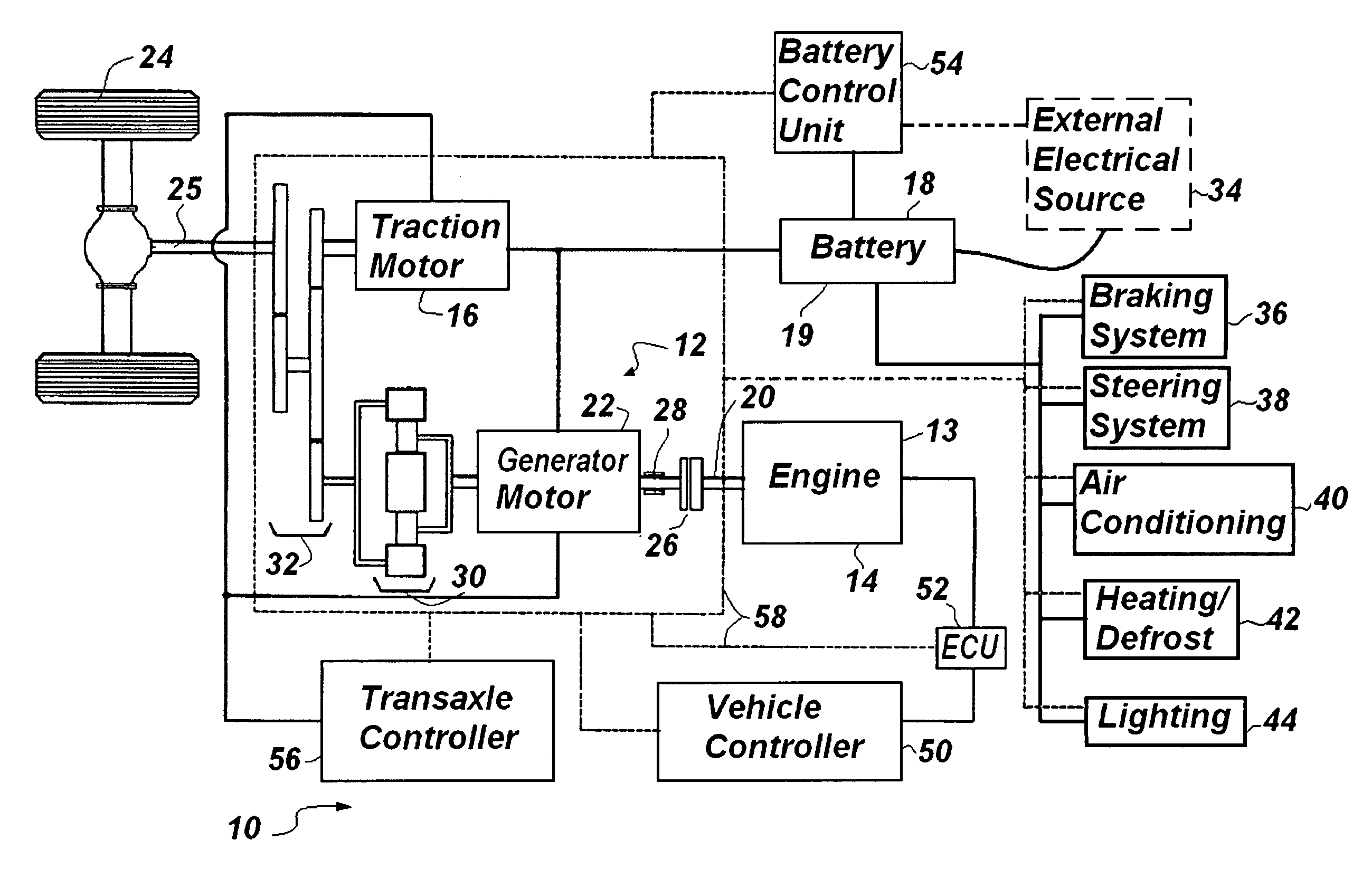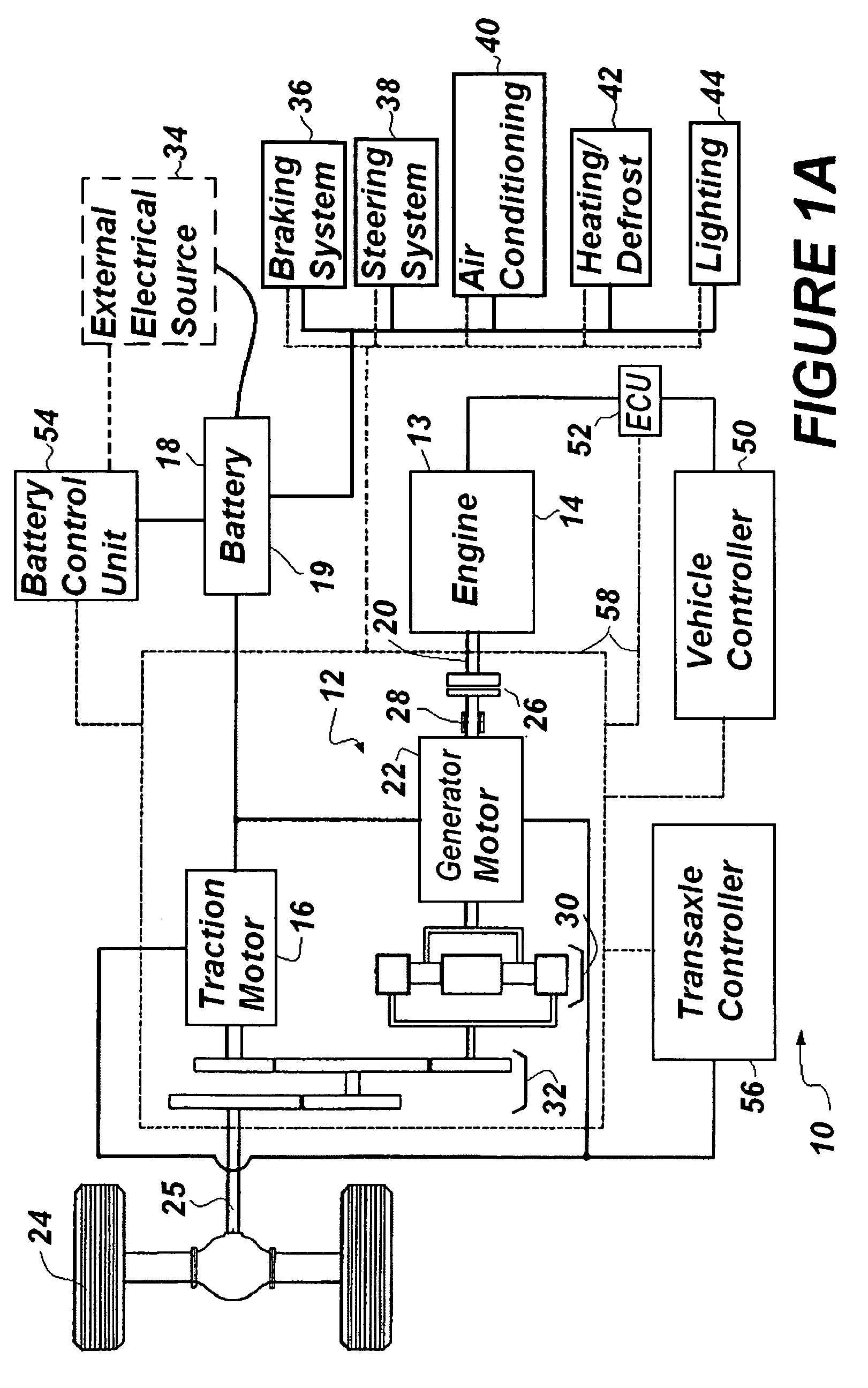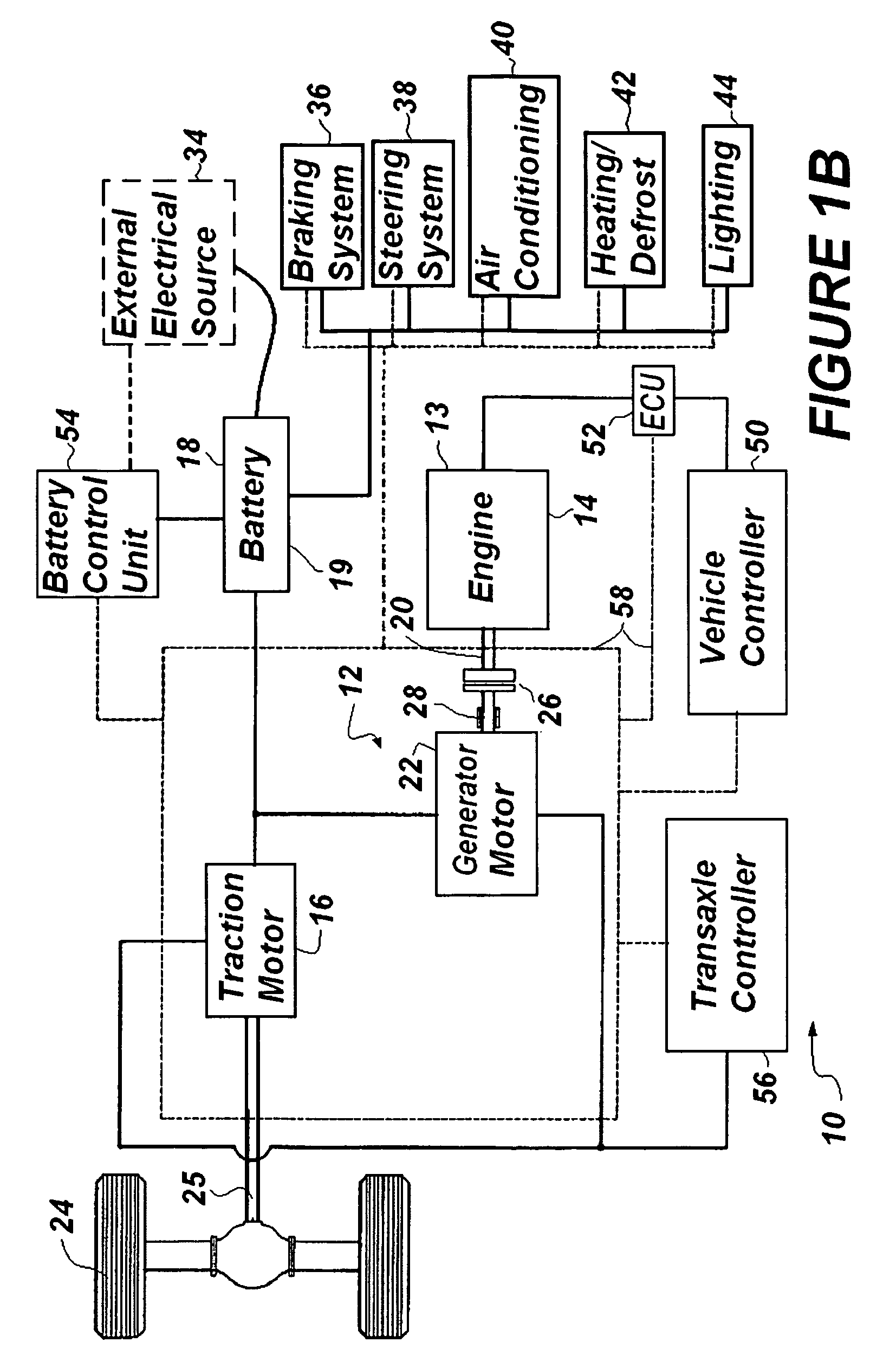Self-learning control system for plug-in hybrid vehicles
a self-learning, hybrid vehicle technology, applied in vehicle position/course/altitude control, process and machine control, instruments, etc., can solve the problems of less battery life, more expensive battery and hybrid vehicle, shorten battery life, etc., to optimize electric energy, maximize recharge energy, and high rechargeable energy storage device state
- Summary
- Abstract
- Description
- Claims
- Application Information
AI Technical Summary
Benefits of technology
Problems solved by technology
Method used
Image
Examples
Embodiment Construction
[0033]Referring to the drawings, wherein like reference numerals refer to like components, there are shown in FIGS. 1A and 1B schematic illustrations of an example plug-in hybrid electric vehicle 10 with an exemplary drive train 12. The drive train 12 can be driven by a consumable fuel powered means 13, an electric traction motor 16 powered by a rechargeable energy storage device 18, or both. The consumable fuel powered means 13 can by any engine 14 powered by gasoline, diesel, ethanol, natural gas, hydrogen or another combustible fuel which may be an internal combustion engine (ICE), a hydrogen fuel cell or other alternative consumable-fuel-based power unit. The plug-in hybrid electric vehicle 10 is one example of a vehicle and any other type of vehicle with generally similar functionality would be included.
[0034]One example of the plug-in hybrid electric vehicle 10 is an extended range electric drive hybrid electric vehicle (E-REV) shown in FIG. 1B. The engine 14 of the E-REV can ...
PUM
 Login to View More
Login to View More Abstract
Description
Claims
Application Information
 Login to View More
Login to View More - R&D
- Intellectual Property
- Life Sciences
- Materials
- Tech Scout
- Unparalleled Data Quality
- Higher Quality Content
- 60% Fewer Hallucinations
Browse by: Latest US Patents, China's latest patents, Technical Efficacy Thesaurus, Application Domain, Technology Topic, Popular Technical Reports.
© 2025 PatSnap. All rights reserved.Legal|Privacy policy|Modern Slavery Act Transparency Statement|Sitemap|About US| Contact US: help@patsnap.com



